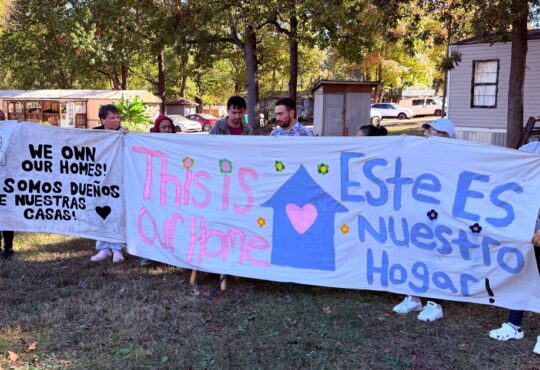- 5G home internet is a wireless alternative to cable and fiber, offering simple setup and flexible plans.
- Leading providers in 2025 include T-Mobile, Verizon, AT&T, and Starry, with plans starting from $30 to $60 per month.
- Verizon offers the fastest potential speeds, while T-Mobile provides the widest national coverage.
Access to fast and reliable internet is essential for U.S. households, especially as more people work and learn from home. In recent years, 5G home internet has emerged as a flexible alternative to cable and fiber, offering quick self-installation, flat pricing and no hard-wired lines.
In 2025, leading providers include T-Mobile, Verizon, AT&T and Starry, with plans starting between $30 and $60 per month. This guide reviews each company’s speeds, coverage and pricing, highlights the pros and cons of 5G technology, and explains how to choose the best plan for your household’s needs.

What are the best 5G home internet providers in 2025?
Several major companies offer 5G home internet plans in 2025.
- Verizon 5G: Fastest speeds, reaching up to 1,000 Mbps download in select areas
- T-Mobile 5G: Widest coverage with straightforward pricing and equipment included
- AT&T Internet Air: Simplest plan with no contracts, bundle discounts and no fees
- Starry Internet: Strongest upload speeds (up to 250 Mbps) but limited to select urban markets
Here are key details for each:
Verizon 5G
Get Verizon 5G starting at $50 per month
- Availability: 34 states, strongest in urban and suburban areas with Ultra Wideband coverage
- Speeds: 300–1,000 Mbps download, up to 50 Mbps upload
- Price: $50–$75 per month across three plans (5G Home, 5G Home Plus, 5G Home Ultimate)
- Extras: Price lock available, equipment included, discounts with Verizon Wireless bundles
- Considerations: Delivers the fastest speeds, but performance varies depending on proximity to Ultra Wideband towers
Read our full Verizon 5G review.
T-Mobile
Get T-Mobile 5G starting at $35 per month
- Availability: All 50 states, including many rural areas
- Speeds: 133–415 Mbps download, up to 55 Mbps upload
- Price: $50–$70 per month, or $35–$55 with T-Mobile wireless bundle; equipment included
- Extras: Unlimited data, three plan options (Rely, Amplified, All-In), straightforward pricing
- Considerations: Widest national coverage, but speeds don’t reach gigabit levels and may slow during congestion
Read our full T-Mobile internet review.
AT&T Internet Air
Get AT&T Air starting at $47 per month
- Availability: 47 states, strongest where AT&T wireless coverage is available
- Speeds: 90–300 Mbps download, 8–30 Mbps upload
- Price: $60 per month, or $47 with AT&T wireless bundle
- Extras: No contracts, no data caps, no equipment fees
- Considerations: Simple, transparent pricing with one plan; speeds can slow in LTE-only areas or during peak times
Read our full AT&T internet review.
Starry Internet
- Availability: Limited to select urban markets: Boston, Denver, Los Angeles, New York, San Antonio and Washington, D.C.
- Speeds: 200–1,000 Mbps download, 50–250 Mbps upload
- Price: $30–$75 per month across five plans
- Extras: Strong upload speeds, no contracts, unlimited data
- Considerations: Attractive pricing and performance for urban users, but coverage is restricted to a handful of markets
Read our full Starry Internet review.
How do the top 5G internet providers compare?
What is 5G internet and how does it work?
5G internet is home or mobile broadband delivered over the fifth generation of wireless technology. Unlike wired connections such as cable or fiber, 5G uses radio signals from nearby cell towers to connect your devices to the internet.
Here’s how it works:
- Cell towers broadcast 5G signals using different frequency bands (low-, mid- and high-band spectrum).
- A 5G gateway or modem in your home picks up the signal, converts it to Wi-Fi and distributes it to your devices.
- Speeds and reliability depend on proximity to towers, signal strength and network traffic. Mid-band 5G provides a balance of speed and coverage, while high-band (millimeter wave) can deliver gigabit speeds but has limited range.
Think of it like this: your smartphone already connects to the internet using 5G; home 5G internet uses the same technology but with a specialized router that powers your entire household’s Wi-Fi instead of just one device.
The result is a wireless alternative to cable or fiber internet, often with simple setup, flat pricing and no contracts. It’s especially useful in areas where wired broadband options are limited.
Pro tip: For better performance, place your 5G gateway upstairs or near a window that faces the nearest tower. Small changes in placement can significantly improve speeds.
Who should consider 5G internet?
5G internet is best suited for households and individuals who:
- Don’t have access to fiber internet: 5G is often faster and more reliable than DSL or satellite, making it a strong alternative in areas without fiber coverage.
- Want a simple setup: Most 5G providers ship a plug-and-play gateway that takes only minutes to install, with no technician visit required.
- Prefer flexible plans: 5G internet typically comes with flat monthly pricing, unlimited data and no annual contracts.
- Live in rural or suburban areas: Carriers like T-Mobile cover wide areas, giving rural households a better option than satellite or slow DSL.
- Need an affordable backup connection: For remote workers or heavy streamers, 5G can serve as a cost-effective secondary internet line in case of outages.
In short, 5G internet is ideal for people who value easy installation, straightforward pricing and broader availability, especially where wired broadband options are limited or expensive.
What are the pros and cons of 5G home internet?
Pros
- Widely available
- Easy setup with self-install equipment
- Flat monthly pricing with no contracts
- Unlimited data included on most plans
- Low latency compared with satellite internet
Cons
- Speeds vary significantly by location and signal strength
- Performance can drop during network congestion
- Maximum speeds usually top out around 1,000 Mbps (lower than fiber)
- Upload speeds are often much slower than downloads
- Service depends on proximity to a 5G tower
Are there alternatives to 5G internet for rural users?
If 5G home internet isn’t available or reliable where you live, there are several alternatives that rural households can consider:
- Satellite internet: Providers like Starlink, Hughesnet and Viasat deliver service almost anywhere in the United States.. Speeds are slower than fiber or cable, but coverage is unmatched.
- Fixed wireless (non-5G): Some local ISPs, such as Rise Broadband, use 4G LTE or other wireless signals to deliver home internet in rural areas, often with higher speeds than satellite.
- DSL (Digital Subscriber Line): Still available in many rural communities through existing phone lines. Speeds are usually limited, but it can be a fallback option.
- Cable or fiber (where available): In some smaller towns, cable companies and rural co-ops have extended fiber or coaxial lines. Fiber offers the best speeds and reliability when it reaches your address.
For rural users, the best alternative often comes down to availability. If you can’t get fiber or cable, satellite and fixed wireless are usually the strongest options for reliable connectivity.
What are the key differences between Verizon, T-Mobile, Starry and AT&T?
T-Mobile, Verizon, AT&T and Starry are the four best 5G internet providers in 2025, but they differ in important ways.
- Verizon 5G Home Internet delivers the fastest speeds, with downloads up to 1,000 Mbps in select areas. It includes price locks, equipment at no extra charge and strong wireless bundle discounts, but performance depends heavily on proximity to 5G Ultra Wideband towers, so speeds can vary widely by location.
- T-Mobile 5G Home Internet is the most widely available option, covering all 50 states. It offers simple setup, unlimited data and flexible plans starting around $50 (as low as $35 with bundles). While it’s strong for rural availability, it doesn’t reach gigabit speeds and can slow during network congestion.
- AT&T Internet Air takes a simpler approach with one straightforward plan: $60 per month, or $47 with an AT&T wireless bundle. It has no contracts, data caps or equipment fees, making it transparent and easy to budget for. Typical speeds run 90–300 Mbps, though performance may drop in LTE-only areas or during peak hours.
- Starry Internet is limited to a handful of cities such as Boston, Denver, Los Angeles, New York, San Antonio and Washington, D.C. Where it’s available, it delivers strong performance with downloads up to 1,000 Mbps and uploads up to 250 Mbps, often at lower prices than national competitors. Its biggest drawback is availability, since it’s only an option in select urban markets.
In short, Verizon is best for top speeds, T-Mobile for broad coverage, AT&T for simplicity and budget-friendliness and Starry for urban users who need strong upload capacity.
Bottom line: How to choose the best 5G home internet provider
5G home internet has grown into a reliable alternative to cable, DSL and satellite, with simple setup, flat pricing and unlimited data. Verizon, T-Mobile, AT&T and Starry each bring different strengths.
When comparing 5G home internet options, keep these factors in mind:
- Availability: Coverage varies by location, so always confirm service at your address.
- Speeds: Verizon and Starry reach gigabit speeds, while T-Mobile delivers broad coverage and solid performance.
- Bundles & discounts: AT&T Internet Air and Verizon offer savings when paired with mobile plans.
- Installation & setup: T-Mobile and Verizon ship equipment free and include easy self-install.
- Risk-free trials: T-Mobile, Verizon and Starry provide money-back guarantees if service doesn’t work for you.
Use the tool below to check availability and speeds at your address.
FAQs about 5G internet
What speeds can you expect with 5G home internet?
Typical 5G home internet speeds range from 100 to 300 Mbps, with maximums up to 1,000 Mbps in ideal conditions.
How does 5G home internet setup work?
Most providers ship a plug-and-play gateway you place near a window; it connects to nearby 5G towers and broadcasts Wi-Fi throughout your home, usually with no technician required.
Is 5G home internet better than satellite internet?
In most cases, 5G offers faster speeds, lower latency and simpler installation, though satellite remains the better option in very remote areas without 5G coverage.
Are there data caps or contracts with 5G home internet?
Most 5G home internet plans include unlimited data, no annual contracts and no equipment fees, making them more flexible than many cable or satellite options.
What is the difference between 5G and LTE home internet?
5G home internet uses newer fifth-generation networks that provide faster speeds and lower latency, while LTE relies on older 4G technology with slower performance and less capacity.
Contributing: Lisa Iscrupe, Hannah Whatley, Allconnect
This article was edited with the assistance of Artificial Intelligence (AI) and reviewed by a journalist before publication.Learn more about Gannett’s AI guidelines and policy here.





